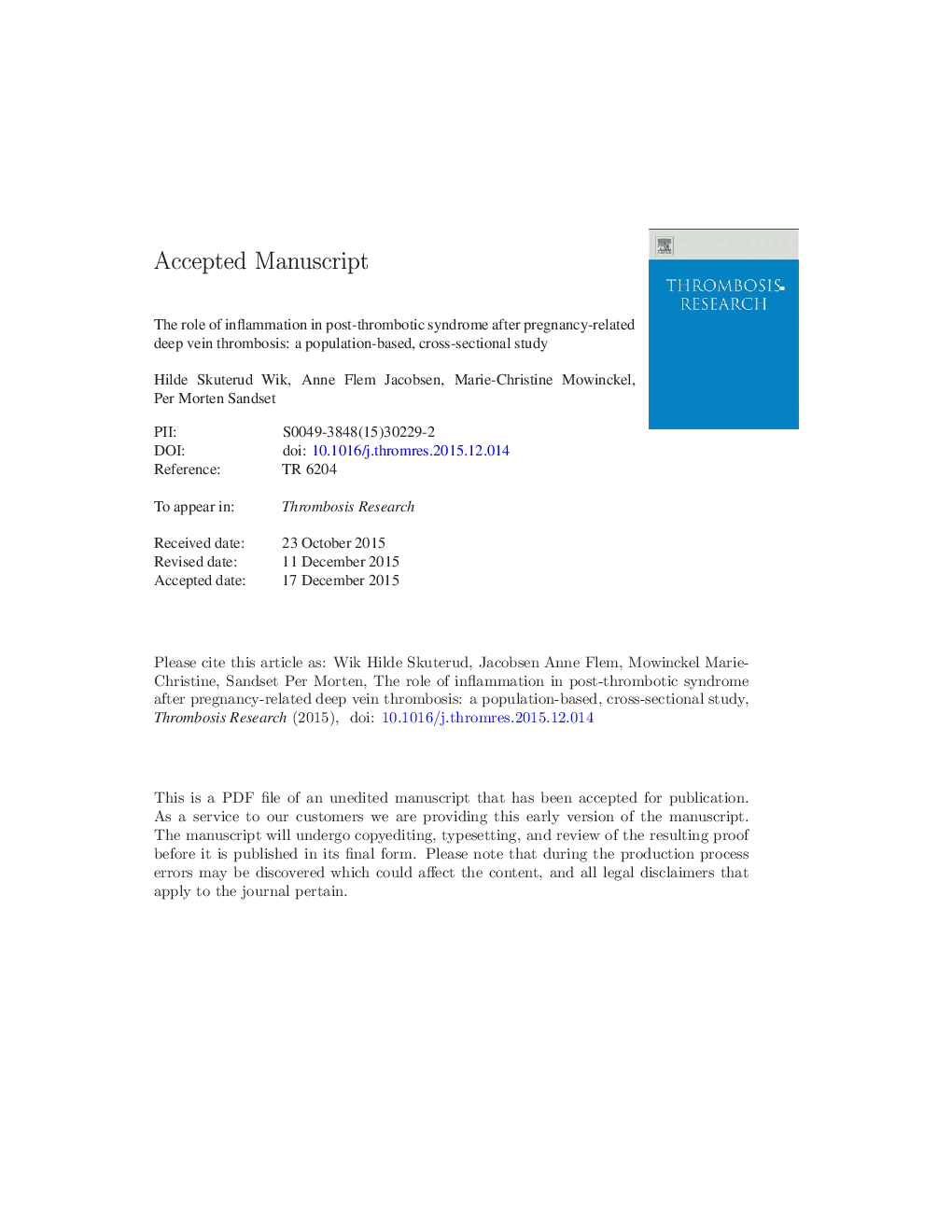| Article ID | Journal | Published Year | Pages | File Type |
|---|---|---|---|---|
| 6000661 | Thrombosis Research | 2016 | 20 Pages |
Abstract
Previous studies suggest that inflammation may play a role in the pathophysiology of post-thrombotic syndrome (PTS). The aims of the present study were to evaluate markers of inflammation as possible predictors for PTS after pregnancy-related deep vein thrombosis (DVT). We included 182 women with a pregnancy-related DVT during 1990-2003 and 314 controls. All women answered a questionnaire and donated a blood sample in 2006. PTS was diagnosed when a self-reported Villalta score was above 4. The following predictors of PTS were included: high sensitivity C-reactive protein (hsCRP), interleukin (IL)-6, IL-8, IL-10, monocyte chemotactic protein (MCP)-1, transforming growth factor (TGF)-β1, platelet derived growth factor (PDGF)-BB, and the two adhesion molecules intercellular adhesion molecule (ICAM)-1 and vascular cell adhesion molecule (VCAM)-1. High values were defined as above median value among controls. We found that 41% of cases were diagnosed with PTS 3-16 years after index pregnancy. In univariate analyses, high values of hsCRP, IL-6, and IL-10 were significantly associated with PTS with ORs 2.3 (95% CI; 1.2-4.2, p = 0.008), 1.9 (1.0-3.5, p = 0.04), and 10.8 (1.3-89.8, p = 0.01), respectively. Only hsCRP, which has previously been found to be independently associated with PTS, was independently associated with PTS in a multivariate logistic regression model, when adjusting for proximal DVT occurring postpartum, age above 33 years, and smoking (adjusted OR 2.4; 95% CI 1.2-4.8, p = 0.01). We conclude that hsCRP was associated with PTS 3-16 years after pregnancy-related DVT.
Related Topics
Health Sciences
Medicine and Dentistry
Cardiology and Cardiovascular Medicine
Authors
Hilde Skuterud Wik, Anne Flem Jacobsen, Marie-Christine Mowinckel, Per Morten Sandset,
